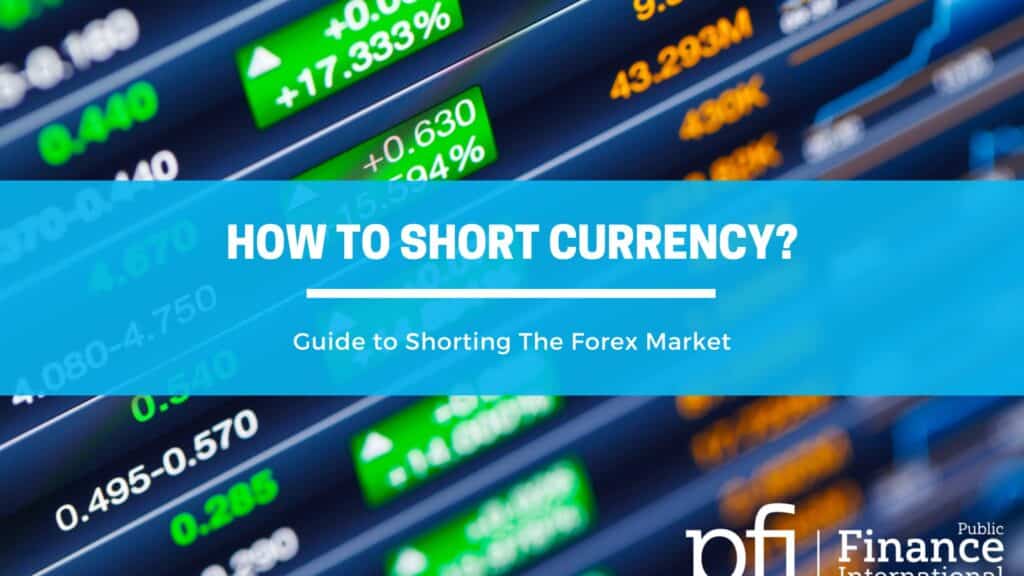In this article, we go over how to short currencies and short the forex market.
The FX market allows short selling, much like the numerous financial markets. But what is short selling? How to short forex?
How To Short-Sell a Currency in The Forex Market
You can short a currency in forex by trading using derivatives like CFDs and spread bets. These financial instruments will be quoted as a bid and an offer – or a sell and buy.
Below is a step-by-step guide on how to short currency in the forex markets:
1. Research
If you research the various forex pairs, it will be simpler to identify which forex pairs have the highest volatility and the most liquidity.
Regarding these two variables, more risk-averse traders will select more volatile pairs, while traders looking for quick trades, such as scalpers, will select more liquid pairs.
2. Analyse
Before entering a trade, conducting fundamental and technical analysis on the pair you've selected is essential. This is so that research can tell you whether a transaction has a chance of being profitable or not.
Volatility and oversold and underbought circumstances in forex pairings can be identified using technical indicators like Moving Average and Average True Range.
They can determine when a currency pair is about to have a bearish reversal, which is the ideal time to begin a short position.
3. Choose a Forex Trading Strategy
You can use a variety of trading tactics to your advantage when you're on the market.
For instance, using a scalping strategy, which is mainly dependent on rapid and continuous price fluctuations throughout a single trading session, you could open a short position on the EUR/USD pair.
4. Open a Trading Account
You will need a trading account if you wish to trade spot forex. With some forex brokers, creating an account only takes a few minutes, and sometimes you don't need to add money until you're ready to start trading.

How To Close a Short Position?
You'll ultimately want to close a short trade to lock in earnings or reduce losses.
A short seller borrows money, sells it at the going rate, waits for it to decline, and then repurchases it at a lower rate to repay the loan.
To close a short position, you must buy the currency you sold after. This can be done to stop losses if the transaction starts to go against you or to lock in profits if it's going your way.
You'll still need to purchase the currency to repay the loan if it starts to appreciate, but you'll do so at a loss because you'll be paying more than you did when you sold the currency.
If your trade is profitable, high liquidity periods are ideal for concluding a short position. By doing this, you can find a buyer at or near the current market price, guaranteeing a narrow spread.
What is Short Selling in Forex?
Short-selling currency is similar to opening a position to “sell” a currency pair. A trader can open a position to “sell” a currency if they believe its value will decline.
The trader can benefit depending on how much the currency's price decreases. Likewise, if the trader makes wrong predictions and the market rises in value, the investor would lose money relative to the price gain.
Note that you don't need to borrow a specific amount of the currency you wish to short in the FX market; you can just issue a sell order.
Sounds easy, right? But, there are certain complications to short selling. This is because of currency pairs. In every foreign exchange transaction, there is a short position in one currency and a long position in another.
How Does Short Selling Work?
One of your options while trading forex pairs is to either “buy” or “sell” it. You are exchanging one currency for another in both scenarios. The currency you purchase and sell depends on whether you buy or sell.
Consider that you are trading GBP/USD as an example.
If you “buy” that currency pair and go long, you are selling the US dollar and going short on the pound. Similarly, if you buy and go long on that currency pair, you are also going short on the pound simultaneously.
When trading fx pairs, you are constantly taking a position in favor of or against the value of one currency to another.

How Do Currency Pairs Work?
On the Forex market, eight main currencies see a lot of daily trading. They are:
- US dollar,
- British Pound,
- Swiss franc,
- Canadian dollar
- Euro,
- Japanese yen,
- New Zealand Dollar
- Australian dollar
Since the price of each currency is set in respect of a counter-currency, dealers on the Forex market deal with currency pairs rather than single currencies.
A currency pair has two currencies: the base currency, which is the first, and the counter-currency, which is the second. An increasing exchange rate could mean one of the following:
- Either the value of the counter currency is declining, or the value of the base currency is increasing.
- Both the value of the counter-currency and the base currency are falling.
- Both currencies are rising in value, but the base currency is rising to a more significant amount.
- Both currencies are losing value, but the counter-currency is losing value more quickly.
Risks Involved In Short Selling
Forex trading comes with risks. Forex shorting is very risky because there is no maximum loss per trade.
Risk must be considered when shorting a currency pair, significantly the variance in risk between “going long” and “going short.” If you were to go long on a currency, the worst outcome would be to have its value drop to zero.
Even though the wager would be disastrous for your investment portfolio, your loss would be limited because money's value cannot fall below zero.
Theoretically, while shorting currency, values could rise to infinity, resulting in limitless losses.
Below are some tips that help in reducing the risk of short-selling:
- Set stop losses.
- For entry and exit points, keep an eye on critical support and resistance levels.
- Keep up with the most recent economic news and developments to minimize any downside risk.
- Using price alerts on trades is an excellent way to stay informed while away from your platform. Price alerts are text or email messages that inform traders when specific price levels are attained in a particular market. The important levels for the traders can be predetermined for these price alerts.
Conclusion
Going short on a forex currency is easy and entails betting against the market. Due to currency volatility, strong currencies like the pound can experience radically fluctuating prices. So grab the chance whenever you come across it.
While traders who short a currency have a greater chance of success than those who go long in that market, they should be aware of the factors that can affect the currency's value and take precautions to reduce any risks as necessary.
